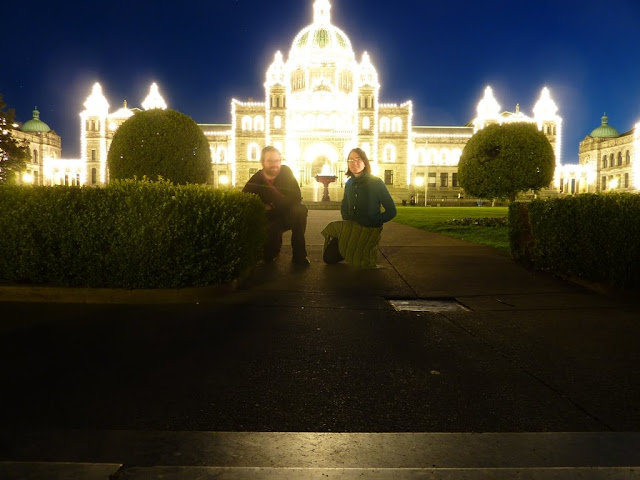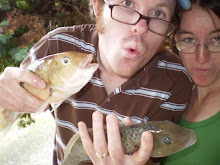Since arriving, the general interest in the chickens living on site has increased greatly. This maybe due to the fact that I started spending many hours painting pictures of the different chickens, or it could be because they kept getting eaten by coyotes, or maybe it's because Brian a.k.a. The Chicken Guy has been coming over regularly, each time filling us with amazing chicken facts and reasons why we need more chickens, ducks or turkeys to add to the flock.
When we first arrived there were about 30 roosters and chickens. They lived in a coop but could also roam freely around the property and we enjoyed collecting their eggs each day. Because no one seemed to know exactly what all the different breeds were, and because I needed a job to get busy with, I set about painting some of the different chickens, with the aim of being able to display some sort of poster to educate visitors and residents alike about these colourful characters.
The painting job turned out to be quite involved – first I had to wander around stalking the chickens, trying to capture them on camera so that I could paint them from a computer screen. Then it was about an 8 – 10 hour job to produce each painting. The project has been a wonderful and rare opportunity to be able to spend so much time painting, and it has also given me a great deal more respect and understanding for these birds. Something about learning their proper names, finding out more about their history, and really focusing on the amazing variety of size and colour and temperament of different chickens certainly has a way of making you love these birds.
So it was a little sad when they started disappearing. Back in April, as the weather got warmer and the coyotes presumably started getting hungrier we discovered some suspiscious looking piles of feathers scattered around the property. Goodbye Barred Rock rooster, goodbye Buff Orpington, goodbye little Frizzle hen. Clearly, we needed to act quickly and ensure that all the chickens were getting safely in behind closed doors each night.
With this problem solved, the next issue became one of finding balance in the flock. The recommended ratio of roosters to hens is about 1 to 6 and we had about 1 to 2. This lead to rather more activity, squabbling, noise, and excitement than is healthy for a hen. So it became necessary to make the difficult decision of which roosters to get rid of. Thankfully, The Chicken Guy (he’s the poultry farmer who originally got the Centre set up with roosters) came around and provided us with a wealth of information about which chickens were the best breed, and which we could safely cull from the flock.
R.I.P. Mrs Frizzle
We don’t eat very much meat here at the centre (approximately once a week), but the meat we do eat comes from sources where we know the animals have been cared for in a way that respects the animals and the environment. So we have beef in the freezer from cows that grazed here, or the occasional salmon steak that has been bought from a sustainable salmon fishery. These roosters were also headed for our freezer, so we wanted to know what would be involved in the process. Matt and Lynton headed off to another poultry farmer's place, and there they watched and learned what is involved in killing, de-feathering and gutting a chicken. Though it’s somewhat ‘icky’ to have known the animals we eat before they arrive on our plate, I’ve found that it certainly makes us more aware and appreciative of what we are eating and more committed to caring for these animals while they are alive. It’s pretty sad that for nearly all the meat I’ve consumed in my life I have had no idea about where it came from, how the animals were treated in life and in death, what sort of impact they had on the environment and what was involved in the processing of the meat before it arrived at the supermarket. And, to quote Matt in a recent discussion on the topic, "it's certainly much easier as an eater, to remain ignorant about these facts about the life of the animals, but such ignorance leads one to take for granted the seemingly endless supply of meat from the supermarket. Coming to know these animals and care for them on a daily basis alerts us to the cost of life which our consumption of meat requires and therefore engenders a deeper thankfulness for all of our food and a commitment to ensure it is grown and cared for in ways which reflect the love we have felt for them." I think it’s going to be a lifelong learning process to learn how to eat well; responsibly, thoughtfully and gratefully.
But back to the rooster population problem – 5 roosters were taken away and have now returned to sit in the freezer to wait for someone to dream up a recipe that finds a way to tenderise old roosters. The existing flock is much calmer without the extra competition, and it’s good to have more room in the place for the new additions that are flowing in.
The Chicken Guy has successfully wooed Matt into seeing the benefits of expanding our flock to include more of the best breeds of chickens, as well as some other excellent poultry birds like giant turkeys and slightly ridiculous-looking runner ducks. A few weeks ago The Chicken Guy arrived with a dozen each of duck, Australorp chicken, and turkey eggs. We were instructed to make a batch of homemade pasta with each kind of egg and then compare the results. They all made very good pasta but the duck eggs were clearly superior – producing a very silky and stretchy pasta.
Given the success of the experiment, three very large white turkeys were delivered to the centre to make a home with the chickens. These turkeys not only provide more great eggs for us to enjoy, they also have endless entertainment value for all the school groups and volunteers that come on site. For many of them this is their first opportunity to see turkeys up close, and being such responsive, communicative animals this has become a highlight for many of the children.
Not only have we learned about the different kinds of breeds of chickens that we own, Brian has also given us an insight into the state of poultry breeding in North America. Most chickens here are bred purely for their meat and egg production capabilities on a mass production scale. Unfortunately this had lead to some imbalances. Some turkeys bred for meat are now breed with such unnaturally large chests that it is no longer physically possible for them to mate with a hen, because they are too large. So artificial insemination is mandatory for these animals. There seems to be something wrong with a system that is breeding infertility into an animal. Brian’s chickens are heritage bred chickens, and he controls the breeding process to ensure that beauty, health, temperament, and size are all kept to the highest standard. Heritage bred birds typically grow to be 3 or 4 sizes larger than the factory breeds.
It has been great to discover that we have some rare and special chickens within our flock. The bluebrown leghorn hen has German heritage and is possibly the only chicken of this breed in North America. Our largest chicken, the Australorp rooster, is a grand black bird with iridescent green feathers. This chicken’s claim to fame is that its mother won a 2008 National title in the annual chicken competition. With the help of Brian, we will keep breeding Australorp hens here, with some of the best of his flock being used as a base.
The Rare Blue Brown Leghorn
The latest update in the chicken story arrived yesterday in a cardboard box. 6 Australorp chicks and 3 runner ducks are now chirping away sweetly in the room next door. The runner ducks are another bird that have comic value as much as anything else. They are very skinny, upright birds that run around at high speeds. Brian tells us they are excellent slug removers and because they are herdable we can use them to walk through the vegetable garden to eat all the slugs as they walk through.
To conclude the painting part of the story, seven chickens have now been painted, framed and hung up in rooms of the house at Brooksdale, a 2nd site that is now managed by the folks here. These rooms will be used for guest accomodation and will perhaps be named with regard to the chicken that each room hosts, e.g. The Brahma Room, or the Rhode Island Red Room. With scanned images of each painting, there are further opportunities to make educational posters and resources, and greeting cards to be sold at the store here at the centre.
Light Brown Leghorn Rooster























